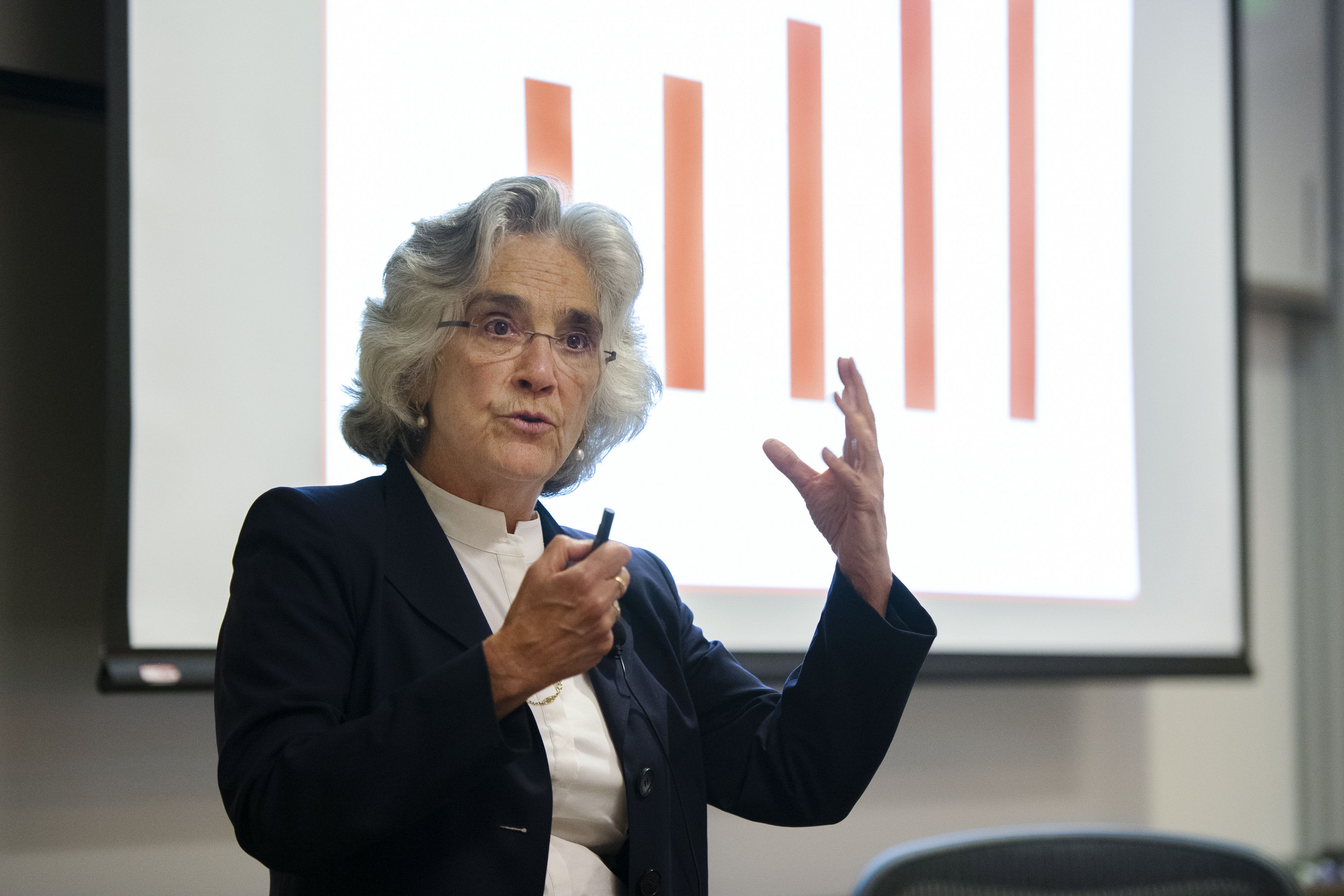In light of the recent sighting of a noose on campus, Stanford President Marc Tessier-Lavigne firmly condemned racism and violence at Thursday’s Faculty Senate meeting. Provost Persis Drell also announced a record-breaking budget of $8.2 billion for the upcoming school year, which includes funds to support expanded infrastructure, affordability and buffers against emergency expenditures.
Tessier-Lavigne began the meeting by acknowledging the discovery of a noose hanging in a tree outside Branner Hall earlier this month as an “assault on the safety and security of our campus community.” Tessier-Lavigne also underscored that a noose is a “hateful representation of anti-Black racism” and a “deeply troubling” symbol of violence.
Tessier-Lavigne denounced the “heinous and heartbreaking, racially motivated” mass shootings in the last week which targeted Black Americans in Buffalo, New York, and Asian Americans in Orange County, California. Ten people were killed and three were injured, 11 of whom were Black, in the mass shooting in Buffalo on Saturday, while four Asian seniors were wounded and one killed at the shooting in an Orange County church on Sunday.
“My thoughts are with the victims and their loved ones and with the broader communities that are struggling to cope with the cumulative effects of yet more senseless and hate-inspired tragedies,” Tessier-Lavigne said. “Our work here at Stanford is to build true and meaningful inclusion and to ensure that all members of our community feel welcome and safe.”
Drell later gave a report on the University’s budget for the next academic year and the Committee on the University Press.
The University’s consolidated budget for operations throughout the upcoming academic year is approximately $8.2 billion, marking the first time the budget has surpassed the $8 billion mark. Drell attributed part of the expanded budget to strong returns on the endowment, which saw a 20% increase in returns this year. She also highlighted the role of philanthropy, in the wake of the donation of $1.1 billion to Stanford’s new School of Sustainability, as pivotal to mitigating the financial impacts of rising inflation.
“We have incredibly generous donors and strong philanthropy, and we have to worry about inflation,” Drell said. “We are now starting to deal with inflation, and we have not had to think about that for many, many years.”
Drell emphasized several factors that played into the formulation of the budget. Goals such as supporting research and education on campus, as well as promoting Stanford’s Long-Range Vision, were considered alongside concerns with the “surge of inflation” and “global uncertainty” in light of the COVID-19 pandemic and Russia’s invasion of Ukraine. Drell also noted that a record-breaking sum of $1.05 billion — a 5.8% increase from the previous year — was designated for total student support, and $51 million was allotted as a base contingency.
Additionally, Drell highlighted expenditures related to infrastructure on campus: roughly $644 million will be spent on construction and infrastructure in the upcoming fiscal year. Funds will support a number of projects on campus, from the construction of the Data Science and Computation Complex to the renovation of the Graduate School of Education and the development of faculty housing.
“We have gotten extraordinary support from our community to keep our mission front and center and to keep executing on our mission in what has to be some of the most turbulent times for this University,” Drell said. “It’s not going to be really easy for a while because we have inflation, we have infrastructure needs and we have affordability needs, which are all going to put pressure on general funds for the foreseeable future.”
Following Drell’s presentation, Slavic languages and literature professor Gabriella Safran, the chair of the Committee on the University Press, reported on the committee’s findings during its first year. She noted that outside reviews of the Stanford University Press have recommended that the press, which lacks an endowment like other university presses, invest more of its resources into marketing and collaborating with faculty. The ad hoc committee was formed two years ago to integrate the insights and skills of Stanford’s campus community with the needs of the Press. Drell addressed the Senate in 2019 to discuss the needs of the Press, pointing out that it was operating with a structural deficit.
“We must pay attention to the Press, the faculty needs to collaborate with the Press and then the Press will continue to serve Stanford as a resource,” Safran said. “A resource in a world where the ability of researchers to communicate their ideas to a broad audience, the ability of universities to speak to the public, is ever more important.”
